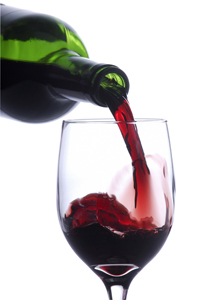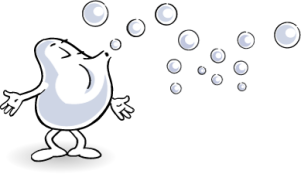The same yeast is not used to ferment beer or whisky, or to make bread .
Researchers have selected specific strains to make beer, wine, spirits and industrial ethanol (including ethanol-based fuel). The different strains of yeast for alcohol thus have their specific features to adapt to certain substrates (fruit, grapes, grain, beet, malt), enhance particular flavours in the finished product, adapt to certain temperatures, resist high or low temperatures, etc.
The first beers appeared "by miracle" in Ancient Times. Discover the indispensable role of brewer's yeast in the production of this beverage.
According to historians, the first beers were accidentally brewed in Mesopotamia and Egypt and their fermentation was spontaneous. Air-borne wild yeasts fermented the must left in the sun and beer was born. For a long time, wild yeasts present in the air spontaneously fermented brewing vats, hence yeast's nickname of "gift of god". Each region would brew its own type of beer as yeast in the air varies, depending on its location! The first scientific research on brewer's yeast was conducted by Pasteur in 1876 (Les études sur la Bière ) and allowed the selection and storage of the most appropriate brewing strains as well as the development of beer pasteurisation.
Nowadays, some beers are still spontaneously fermented (lambics, Gueuze) but most are fermented with high or low fermentation yeasts. They are distinguished by the temperature at which they ferment and therefore the types of beer that can be produced.
High fermentation yeasts are aimed at Ales which ferment between 15°C and 25°C. Low fermentation yeasts are used in lagers or Pils which are brewed at low temperature (7°C to 15°C) and are often kept to mature.
In brewing , yeast plays a major aromatic role and is often brewers' secret ingredient . Depending on the temperatures used in fermentation, the same strain can produce different flavours.
In wine-making, yeast plays different roles
What role does yeast play in wine-making? Wine-making uses different strains of yeast that give wines their unique and sought-after taste. Here's a short wine-making lesson!
What role does yeast play in wine-making? Wine-making uses different strains of yeast that give wines their unique and sought-after taste. Here's a short wine-making lesson!
Yeasts reveal distinctive flavours (for instance the banana flavour so highly sought after in Beaujolais wine) and also enhance the flavours of certain grape varieties (Chardonnay, Sauvignon, etc.).
Besides active dry yeast for fermentation, wine-making yeast derivatives are also marketed . These products are cellular walls, cellular envelopes, inactive or autolysed yeasts. They are used at different stages in wine production.
Finally, in wine maturing, yeast derivatives are used to characterise wines.
Depending on their properties, they can produce a smoother taste or reduce the astringency of certain very tannic wines. Others, with an anti-oxidising power, will prevent white wines from colouring or give a fresher taste to acidic wines.
 In the absence of air, yeast cells transform sugars into carbon dioxide and alcohol. The same yeast is not used to ferment beer or whisky, or to make bread.
In the absence of air, yeast cells transform sugars into carbon dioxide and alcohol. The same yeast is not used to ferment beer or whisky, or to make bread.


.jpg)



